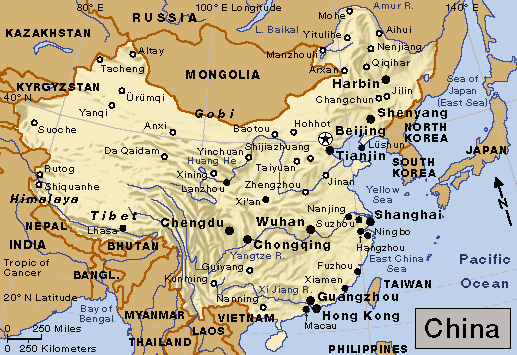Zhejiang Province << juh jee ahng >> is a province in eastern China on the East China Sea. Its name is also spelled Chekiang. With an area of 39,300 square miles (101,800 square kilometers), it is one of China’s smallest provinces. However, it is also one of the most densely populated. The province has many islands, including the Zhoushan Archipelago in the East China Sea. Hangzhou is the capital of Zhejiang Province. Other important cities include Ningbo and Wenzhou, which are busy seaports.

Most of Zhejiang is mountainous and hilly. Pine and bamboo forests cover much of the land. Zhejiang is a leading producer of silk and is known as the “Home of Silk.” The province also has a thriving fishing industry. The seas around the Zhoushan Islands are some of the richest fishing waters in China. Rice and tea are two of the province’s main crops.
Zhejiang gained importance in the 1100’s, when the emperors of China’s Song (family of rulers) made Hangzhou their capital. It was one of the largest cities in the world at that time. Marco Polo, an Italian trader, visited Zhejiang in the 1200’s. He called Hangzhou “the finest and most splendid city in the world.”
Zhejiang suffered great damage during the Taiping Rebellion (1850-1864). After the Chinese Revolution (1911-1912), the province became a power base for the Kuomintang (Nationalist Party) of Chiang Kai-shek, who was born in Zhejiang. Japan occupied much of Zhejiang from 1937 until the end of World War II in 1945.
